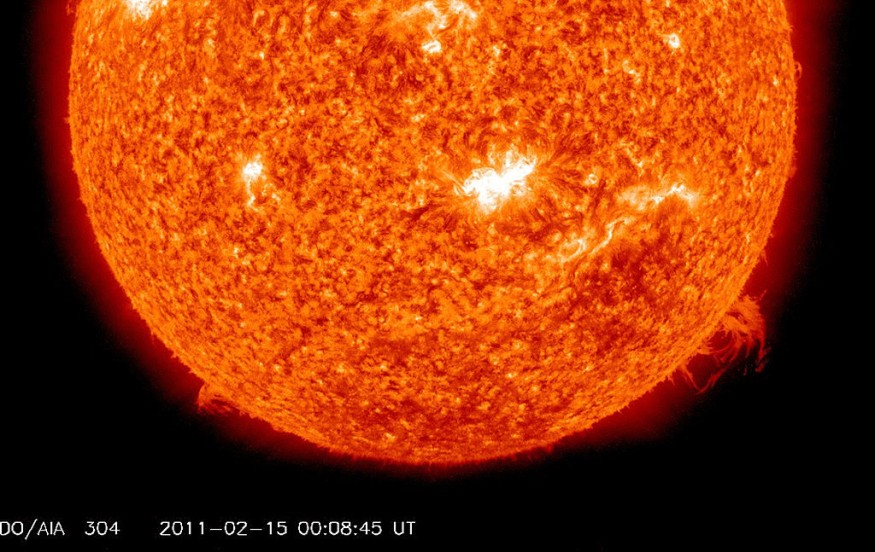
Data from European Space Agency's (ESA) Cluster and Swarm missions led scientists to believe that a certain solar storm could cause a major blackout, destroying life on Earth.
Researchers of a recently published study in Geophysical Research Letters established issued a solar storm warning after establishing a link between solar storms, bursty bulk flows (fast bursts of ions with typical velocities larger than 150 km/s) in the inner magnetosphere and disturbances in the ground level magnetic field which drive "geomagnetically induced currents" on and below Earth's surface.
It was recently discovered that the bubble created by its magnetic field known as the magnetosphere where life on Earth depends can be affected by certain solar conditions, known as space weather, disrupting the region, threatening life on Earth.
"Space Weather from Hell"
The interactions between the Earth's magnetosphere are extremely dynamic, consisting of complicated magnetic field configurations and electric current systems. Due to certain solar conditions, such as solar storms, space-based hardware, ground-based communication networks, and power systems are disrupted, causing a potential massive blackout depending on impact - such as the "major blackout" that Quebec in Canada suffered in 1989.
According to the research, a geomagnetic storm could damage communication networks and navigation systems, such as GPS and satellites. These storms cannot only affect the Earth's surface, but also its subsurface. They can even damage all communication systems on Earth.
These major outages have far more deadly consequences than it seems, as vital satellites might be shut down as well.
This finding suggests that as space technology and communication systems advance at a rapid pace, so should the monitoring of weather in space to properly adopt mitigation strategies to prevent disasters to happen in the future.
The Magnetic Environment Protecting Life on Earth
Protecting life and habitability in the planet depends greatly on the magnetosphere. According to NASA, this protective magnetic field continues to develop and sustain life on Earth, keeping us apart from solar and cosmic particle radiation, as well as erosion of the atmosphere by the solar wind.
Alexi Glover, from ESA's Space Weather Office, said, "These new results help further our understanding of processes within the magnetosphere which may lead to potentially hazardous space weather conditions.
"Understanding these phenomena and their potential effects is essential to develop reliable services for end-users operating potentially sensitive infrastructure."
Malcolm Dunlop, from the Rutherford Appleton Laboratory in the UK, explained, "We used the example of a solar storm in 2015 for our research.
Data from Cluster allowed us to examine bursty bulk flows - bursts of particles in the magnetotail - which contribute to large-scale convection of material towards Earth during geomagnetically active times, and which are associated with features in the northern lights known as auroral streamers.
"Data from Swarm showed corresponding large perturbations closer to Earth associated with connecting field-aligned currents from the outer regions containing the flows.
"Together with other measurements taken from Earth's surface, we were able to confirm that intense magnetic field perturbations near Earth are connected to the arrival of bursty bulk flows further out in space."
© 2025 NatureWorldNews.com All rights reserved. Do not reproduce without permission.





